Several protocols are utilised for the Internet of Things (IoT), each with its own advantages, making it challenging to select one. The choice largely depends on the device and its compatibility.
As your home automation needs evolve, it’s essential to consider the protocol your system employs.
The protocol facilitates communication among devices (sensors, switches, etc.) in your home automation system.
For instance, switches or cameras must receive signals to respond to commands effectively.
To learn more about smart homes, check out our introduction to home automation project.
Wireless protocols like Z-Wave enable cost-effective retro-fitting of home automation systems, driving significant growth in DIY home improvement.
Z-Wave, a leading protocol in home automation, offers a wide range of certified devices, making it a market leader.
For further information on Z-Wave and certification, visit the Z-Wave website.
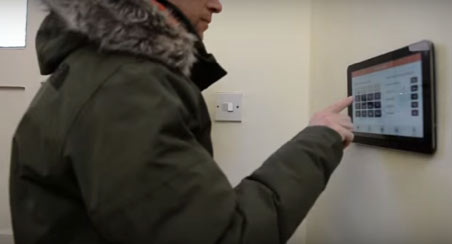
Z-Wave home automation system control app
Understanding Z-Wave
Z-Wave is a wireless technology designed for smart home communication. It functions similarly to Wi-Fi but with distinct operational methods.
Utilising low-powered radio waves (RF), Z-Wave enables communication between smart devices through walls and doors, without affecting Wi-Fi networks.
In contrast to Wi-Fi, where devices communicate directly with a central hub (like a router), Z-Wave devices relay messages to one another, forming a mesh network.
This mesh network setup enhances message range and reliability, minimising “dead spot” where signals are weak.
As a two-way protocol, Z-Wave ensures signal acknowledgment, providing confirmation when commands, such as turning on lights remotely, are executed.
This bidirectional communication also facilitates message retransmission until acknowledged, enhancing reliability.
Moreover, Z-Wave generates network-wide status updates, allowing remote monitoring and control of connected devices via a dedicated app.
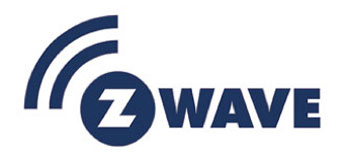
Z-Wave company logo
Is Z-Wave Better or Worse Than Wi-Fi?
This is tough question to answer, as both protocols certainly have their up and down sides.
Wi-Fi is certainly the most popular of the 2 protocols and is now pretty much the world wide standard in terms of wireless internet connectivity.
The major advantage that Z-Wave has over Wi-Fi is that it operates on a lower frequency range, around 800-900MHz and due to this generally has a greater non-line of site range giving it a more reliable connectivity between devices over a greater distance, even if they are not both physically visible to each other.
Does Z-Wave Work Without Wi-Fi?
Although Z-Wave is its own protocol and allows enabled devices to connect to each other without the need for any Wi-Fi, most Z-Wave systems can be accessed and controlled over the internet through the use of smart phones, computers and other devices and to to this, the Z-Wave main hub needs to be connected.
So in answer, although Z-Wave components can talk to each other without Wi-Fi, to control them from an internet device they ned to be connected to the internet.
Understanding Z-Wave Plus
Z-Wave Plus is the upgraded version of Z-Wave, offering improved capabilities for smart home networks.
One major enhancement is the support for newer devices, known as the 500 series or Gen 5 devices.
Addressing common issues like limited range and power consumption, Z-Wave Plus extends the range of smart home devices, enabling automation even in distant areas.
While expanding transmission range, it also increases power usage, which is crucial as many devices operate on batteries.
Z-Wave Plus tackles these challenges by enhancing battery life by up to 50% and significantly extending the range.
Additionally, it offers benefits such as increased bandwidth for more efficient data transmission, simplified setup and installation, and Over the Air (OTA) upgrade capability to keep devices up to date.
- Increased bandwidth for more data transmission
- Simplified setup and installation
- Over the Air (OTA) upgrade capability for devices
- Up to 50% increase in battery life
- Extended range of up to 150m (clear air)
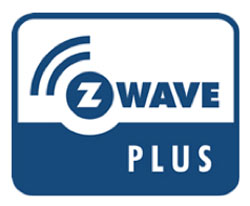
Z-Wave plus version of the Z-wave protocol
Z-Wave and Z-Wave Plus Compatibility
All Z-Wave and Z-Wave Plus certified products are fully interoperable – Z-Wave Website
While Z-Wave Plus devices offer benefits when used together with a Z-Wave Plus hub, compatibility between Z-Wave and Z-Wave Plus devices on the same network requires consideration.
Initially, you may have a mix of Z-Wave and Z-Wave Plus devices, either due to upgrading existing systems or availability of Gen 5 models.
Here are the implications of having a mixed system:
- Battery life: Z-Wave Plus devices enjoy longer battery life, but older devices won’t benefit from this improvement.
- Range: Range is determined by the network’s devices, so introducing Z-Wave Plus devices may not extend range noticeably.
- Controller or Hub: The hub is crucial. Without a Z-Wave Plus controller, you won’t experience Z-Wave Plus benefits (except battery life). Mixing Z-Wave and Z-Wave Plus devices may revert the network to the older Z-Wave protocol if an older controller is used. To fully leverage Z-Wave Plus devices, ensure messages between devices and the controller don’t pass through older Z-Wave devices.
Identifying Z-Wave and Z-Wave Plus Products
For a product to be used on a Z-Wave network, it must be certified, ensuring interoperability, security, and reliability. Look for the Z-Wave certification advertised on the product or its sales platform, often accompanied by the Z-Wave logos:
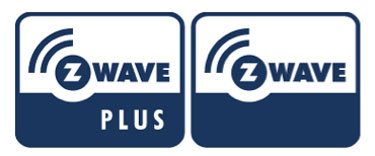
Logos for Z-Wave and the Newer Z-Wave Plus
Compatible Devices for Z-Wave
Over 300 manufacturers produce products for Z-Wave, including major names in consumer electronics and home security like ADT Pulse, AT&T Digital Life, and Staples Connect.
The Z-Wave Alliance, comprising major electronics manufacturers such as Panasonic, LG, and Huawei, influences standards and certifications.
Many renowned manufacturers certifying their products with Z-Wave contribute to its widespread success. It’s challenging to find a manufacturer not producing Z-Wave devices!
Here are some prominent names in home automation and their compatibility with Z-Wave:
- Nest: Nest, Google’s “learning thermostat”, doesn’t currently operate on Z-Wave. However, third-party products can be used to interface with your Nest device. Cloud-based integration with Nest is also possible, depending on the connection. The controller’s capabilities determine the extent of these integrations. Nest offers more than just thermostats; they also have cameras and smoke alarms available.
- Amazon Echo: Amazon created the Echo to utilise their Alexa Voice Service for ordering products and services. While Z-Wave wasn’t directly integrated into the Echo’s design, many Z-Wave hub manufacturers have incorporated the Echo into their products. As a result, numerous Z-Wave manufacturers already operate within the Amazon Echo platform.
- Apple HomeKit: Apple’s HomeKit app enables you to connect and control a variety of products through the app. While it’s currently not compatible with Z-Wave, Apple has partnered with about 50 brands and manufacturers to make their products HomeKit-compatible. Z-Wave has stated they are collaborating with Apple to integrate the two systems, so compatibility news may be imminent.
- Apple Watch: Z-Wave works with the Apple Watch so long as your Z-Wave app has an iOS version that allows you connect to your Apple Watch
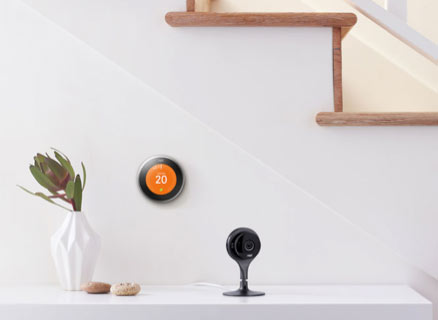
Nest home automation system thermostat
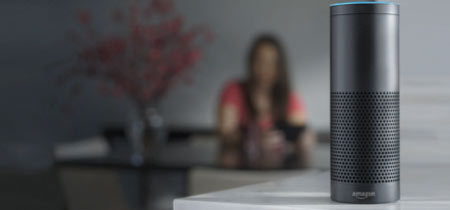
Amazon Echo allows communication with the Amazon Alexa Voice Service

Apple HomeKit smart home and app communication system
Who Sets the Z-Wave Standards?
The Z-Wave protocol, including Z-Wave Plus, was initially developed by Sigma Designs in the USA. However, the ownership now resides with a Chinese company named v-silicon.com following Sigma Designs’ closure.
Originally designed as an open protocol, allowing for universal device development, the Z-Wave Alliance, in collaboration with v-silicon.com, upholds stringent standards to ensure consistency and reliability across all devices.
The Z-Wave Alliance, comprising manufacturers and stakeholders, oversees the protocol’s implementation. Their mission is to ensure seamless interoperability among devices, irrespective of brand or vendor, a distinctive feature of Z-Wave technology.
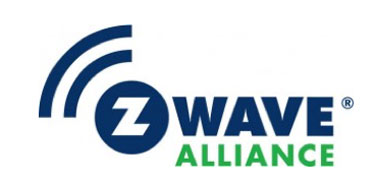
Z-Wave Alliance help to influence the Z-Wave Protocol
Z-Wave in Brief
In summary, Z-Wave offers:
- Frequency: Operates on the 908.42MHz frequency band
- Low Energy: Battery-powered devices last a year or more
- Range:
- Up to 40m (120 feet) with clear line of sight; range diminishes with obstacles like walls
- Max range of 200m (600 feet) with up to 4 ‘hops’ through other Z-Wave devices*
- Security: Each Z-Wave network assigns a unique ID to every device, ensuring privacy from neighbouring networks
- Enhanced Security: For sensitive devices like door locks, Z-Wave Plus Controllers offer AES128 encryption, akin to bank-level security
- Device Capacity: Supports up to 232 devices per network, with some controllers enabling multiple networks for expanded capacity
* Z-Wave’s mesh networking facilitates signal transmission through other Z-Wave products, allowing coverage to extend beyond direct reach. With up to 4 hops, Z-Wave networks can expand coverage based on the number of devices present.
Integrating Z-Wave into Your Home
You have options for incorporating Z-Wave into your home:
- DIY Installation: Modern home automation systems are designed for easy DIY setup. If you can install your own broadband and Wi-Fi, you can handle this. Start by purchasing a basic system with a Z-Wave hub or controller.
- Hire a Professional: Many home security companies offer installation of Z-Wave-based home automation solutions. Phone, internet, and cable companies also provide similar services. Independent contractors can provide more flexibility in system choice. Find local professionals on our Find a Tradesman page.
Alternatives to Z-Wave
Several alternatives to Z-Wave and Z-Wave Plus exist. Here are the leading ones:
- Zigbee: Another mesh network similar to Z-Wave, but with less stringent certification. Compatibility between devices from different manufacturers can be an issue. However, its adoption is growing, especially with leading devices like Nest.
- LightwaveRF: A UK-based manufacturer offering affordable starter systems, primarily focused on simple solutions like lighting.
- Insteon: Ideal for upgrading older wired home automation systems like X10, offering enhanced functionality and compatibility with X10.
- BLE (Bluetooth Low Energy): Commonly integrated into devices but typically as a secondary protocol. Range is limited compared to other network protocols.
Other solutions worth considering include Wi-Fi, which is widely available but may face bandwidth congestion, and X10, an established protocol that’s becoming outdated.
For a comprehensive home automation solution, you might need to combine different protocols. Ensure compatibility and interoperability between the chosen devices’ protocols.
Internet connected smart devices and the Internet of Things is very much in its infancy and there are numerous different connection methods and languages out there and available so if you are just getting into this area it’s important that you do your homework and know exactly what protocol will suit your needs the best.

